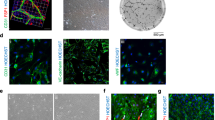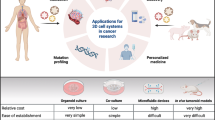Abstract
Stem cells produce nanosized particles known as extracellular vesicles (SC-EVs), which therapeutically affect stem cells. EVs are more abundantly produced, exhibit better stability, and possess lower immune rejection rates than stem cells. However, the traditional methods of isolating EVs, such as ultracentrifugation, possess limitations that require a complex process and consume more time. Moreover, it is difficult to isolate specific EVs that have target surface proteins that affect regenerative effects. To address these limitations, a new dual-mode horseshoe-shaped orifice micromixer (DM-HOMM) chip that can bind antibody-conjugated micromagnetic beads and SC-EVs and sequentially elute specific SC-EVs on the beads using an eluent was developed. For effective elution from the microbead-SC-EV complex, four types of eluents were used to control pH and ionic strength between antibodies and surface proteins in EVs. In addition, we investigated the reusability of antibody-conjugated micromagnetic beads. The beads indicated identical binding efficiencies between the antibodies and specific SC-EVs for three repeated cycles using the dual-mode chip. CD63+ EVs collected by the chip exhibited higher cell viability and regeneration effects than untreated and total EVs. This SC-EVs’ isolation method possesses the potential for targeted therapeutic applications and enhanced regenerative effects.






Similar content being viewed by others
Data availability
The authors declare that the data supporting the findings of this study are available within the paper and its Supplementary Information files.
References
Kim, B.-S., Jang, H.-K.: Modulation of Stem Cell Differentiation with Biomaterials. Int. J. Stem Cells 3, 80–84 (2010)
Hoang, D.M., Phuong, T.P., Trung, Q.B., Anh, T.L., Quyen, T.N.: Stem cell-based therapy for human diseases. Sig. Transduct. Targeted Therapy 7, 272–313 (2022)
Shin, H.S., Songyi, L., Hye, J.H., Young, C.L, Won-Gun, K., Jae-Yol, L..: Stem cell properties of human clonal salivary gland stem cells are enhanced by three-dimensional priming culture in nanofibrous microwells. Stem Cell Res. Therapy 9, 74–85 (2018)
An, S., Han, S.Y., Cho, S.W.: Hydrogel-integrated microfluidic systems for advanced stem cell engineering. BioChip J. 13, 306–322 (2019)
Zakrzewski, W., Dobrzyński, M., Szymonowicz, M., Rybak, Z.: Stem cells: past, present, and future. Stem Cell Res. Therapy 10, 1–22 (2019)
Poulos, J.: The limited application of stem cells in medicine: a review. Stem Cell Res. Therapy 9, 1–11 (2018)
Gelibter, S., Marostica, G., Mandelli, A., Siciliani, S., Podini, P., Finardi A., Furlan, R.: The impact of storage on extracellular vesicles: a systematic study. J. Extracell. Vesicles 11, 1–18 (2022)
Yáñez-Mó, M., et al.: Biological properties of extracellular vesicles and their physiological functions. J. Extracell. Vesicles 4, 1–60 (2015)
Keshtkar, S., Kaviani, M., Soleimanian, S., Azarpira, N., Asvar, Z., Pakbaz, S.: Stem cell-derived exosome as potential therapeutics for microbial diseases. Front. Microbiol. 12, 1–11 (2022)
Wang, W., Zhu, N., Yan, T., Shi, Y., Chen, J., Zhang, C., Xie, X., Liao, D., Qin, L.: The crosstalk: exosomes and lipid metabolism. Cell Commun. Signal. 18, 1–12 (2020)
Ha, Y., Kim, I.: Recent developments in innovative magnetic nanoparticles-based immunoassays: from improvement of conventional immunoassays to diagnosis of COVID-19. BioChip J. 16, 351–365 (2022)
Zou, Y., et al.: Mesenchymal stem cell-derived extracellular vesicles/exosome: a promising therapeutic strategy for intracerebral hemorrhage. Regener. Therapy 22, 181–190 (2023)
Zhang, Y., et al.: Exosome: a review of its classification, isolation techniques, storage, diagnostic and targeted therapy applications. Int. J. Nanomed. 15, 6917–6934 (2020)
Gould, S.J., Raposo, G.: As we wait: coping with an imperfect nomenclature for extracellular vesicles. J Extracell. Vesicles 2, 20389–20381 (2013)
Coughlan, C., et al.: Exosome isolation by ultracentrifugation and precipitation: a comparison of techniques for downstream analyses HHS Public Access. Curr. Protoc. Cell Biol. 88, 110 (2020)
Yakubovich, E.I., Polischouk, A.G., Evtushenko, V.I.: Principles and problems of exosome isolation from biological fluids. Biol. Membrane 16, 172–185 (2022)
Wu, Y., et al.: Microfluidic technology for the isolation and analysis of exosomes. Micromachines 13, 1571 (2022)
Chung, A.J.: A minireview on inertial microfluidics fundamentals: inertial particle focusing and secondary flow. BioChip J. 13, 53–63 (2019)
Chen, J., Li, P., Zhang, T., Xu, Z., Huang, X., Wang, R., Du, L.: Review on strategies and technologies for exosome isolation and purification. Front. Bioeng. Biotechnol. 9, 811971–811989 (2022)
Gwak, H, Park, S., Kim, J., Lee, J.D., Kim, I., Kim, S., Hyun, K., Jung, H.: Microfluidic chip for rapid and selective isolation of tumor-derived extracellular vesicles for early diagnosis and metastatic risk evaluation of breast cancer. Biosens. Bioelectron. 192,1–15 (2021)
Gwak, H., Park, S., Yu, H., Hyun, K.A., Jung, H.I.: A modular microfluidic platform for serial enrichment and harvest of pure extracellular vesicles. Analyst 147, 1117–1127 (2022)
Zhang, Y., Tong, X., Yang, L., Yin, R.: A herringbone mixer based microfluidic device HBEXO-chip for purifying tumor-derived exosomes and establishing miRNA signature in pancreatic cancer. Sens. Actuators B Chem. 332, 129511–129519 (2021)
Kang, Y.T., Purcell, E., Rolston, C., Lo, T., Ramnath, N., Jolly, S., Nagrath, S.: Isolation and profiling of circulating tumorassociated exosomes using extracellular vesicular lipid–protein binding affinity based microfluidic device. Small 15, 1903600 (2019)
Chen, Y., Gao, D., Zhu, Q., Chu, B., Peng, J., Wang, J., Liu, L., Jiang, Y.: Rapid exosome isolation and in situ multiplexed detection of exosomal surface proteins and microRNAs on microfluidic platform. Analyst 10, 1–12 (2023). https://doi.org/10.1039/D3AN00335C
Hisey, C.L., Dorayappan, K.D.P., Cohn, D.E., Selvendiran, K., Hansford, D.J.: Microfluidic affinity separation chip for selective capture and release of label-free ovarian cancer exosomes. Lab Chip 18, 3144–3153 (2018)
Semina, S.E., Scherbakov, A.M., Vnukova, A. Bagrov, D., Evtushenko, E., Safronova, V., Golovina, D., Lyubchenko, L..: Exosome-mediated transfer of cancer cell resistance to antiestrogen drugs. Molecules 23, 829–847 (2018)
Zuo, R., Liu, M., Wang, Y., Li, J., Wang, W., Wu, W., Sun, C., Li, B..: BM-MSC-derived exosomes alleviate radiation-induced bone loss by restoring the function of recipient BM-MSCs and activating Wnt/β-catenin signaling. Stem Cell Res. Ther. 10, 30–43 (2019)
McBride, J.D., et al.: Bone marrow mesenchymal stem cell-derived cd63+ exosomes transport wnt3a exteriorly and enhance dermal fibroblast proliferation, migration, and angiogenesis in vitro. Stem Cells Dev 26, 1384–1398 (2017)
Yan, B., Qing, T.: Comparison of kinetics of organic reactions carried out on resin beads of different diameters. Ind. Eng. Chem. Res. 42, 5964–6597 (2003)
Howard, P.L.: Principles of antibody elution. Transfusion (Paris) 21, 477–482 (1981)
Firer, M.A.: Efficient elution of functional proteins in affinity chromatography. J. Biochem. Biophys. Methods 49, 433–442 (2001)
Kato, M., Yamaguchi, M., Morita, T., Watanabe, N., Ota, S., Yamamoto, E..: A method for purifying nanoparticles using cationic modified monoliths and aqueous elution. J. Chromatogr. A 1664, 462802–462812 (2022)
Chen, J., Xu, F., Wang, Y.: Biomass-derived magnetic nanocomposites modified by choline chloride/citric acid based natural deep eutectic solvents for the magnetic solid phase extraction of trypsin. Analyst 10,1–15 (2023)
Tyagi, N., Bhardwaj, A., Srivastava, S., Arora, S., Marimuthu, S., Deshmukh, S., Singh, A., Carter, J., Singh, S.: Development and characterization of a novel in vitro progression model for UVB-induced skin carcinogenesis. Sci. Rep. 5, 13894–13905 (2015)
Acknowledgements
This study was supported by the National Research Foundation of Korea (NRF) grant funded by the Korean government (MSIT) (No. 2020M3A9I4039045, No. 2021R1A2C3011254, and No. 2023M3A9I4010261) and the Technology Innovation Program (20008829) funded by the Ministry of Trade, Industry & Energy (MOTIE, Korea).
Author information
Authors and Affiliations
Corresponding authors
Ethics declarations
Conflict of Interest
The author has no financial or non-financial interests to disclose.
Additional information
Publisher's Note
Springer Nature remains neutral with regard to jurisdictional claims in published maps and institutional affiliations.
Supplementary Information
Below is the link to the electronic supplementary material.
Rights and permissions
Springer Nature or its licensor (e.g. a society or other partner) holds exclusive rights to this article under a publishing agreement with the author(s) or other rightsholder(s); author self-archiving of the accepted manuscript version of this article is solely governed by the terms of such publishing agreement and applicable law.
About this article
Cite this article
Yu, H., Kim, J., Yu, J. et al. Continuous Isolation of Stem-Cell-Derived Extracellular Vesicles (SC-EVs) by Recycled Magnetic Beads in Microfluidic Channels. BioChip J 17, 468–477 (2023). https://doi.org/10.1007/s13206-023-00122-2
Received:
Revised:
Accepted:
Published:
Issue Date:
DOI: https://doi.org/10.1007/s13206-023-00122-2




